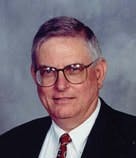By Greg McMillan and Stan Weiner, PE
Greg: In what two areas of process control did your efforts reap the greatest benefits?
Vernon: The first is vendor collaboration. Before the early 1980s at Monsanto, we used a variety of brands and models of control equipment. Since our style was decentralized management, we embarked on a series of team activities with representatives from several dozen parts of the company to investigate the value of standardization, well before high-performance teams or vendor collaboration were as common as they are today.
In the resulting plan, vendors were chosen based on product technical quality, support, and lifecycle cost. An additional selection criterion was that the vendor be willing to devote special attention to the company to educate users about its products, address sales and support issues, and provide home-office backup assistance to resolve technical problems. This provided a readily accessible level of support in addition to the local sales representatives in the territory of each plant.
We standardized on that vendor; our engineers and technicians spent the time necessary to understand the products and work with the vendor to resolve problems. We devoted management resources to understand feedback from users, and met with the vendor’s management regularly to review issues and their resolution.
Benefits included better application designs, better resolution of problems, and lower costs. An important part of the relationship was influencing new product development, and we spent thousands of hours on that area—benefiting vendors, I believe, even more than ourselves.
ISA Fellow Vernon Trevathan spent 35 years with Monsanto. He currently teaches and consults in project management and automation.
Though engineers like to make their own choices, and sales personnel like to maximize their profit on each sale, there was surprisingly good buy-in for the program. However, if the relationship with any vendor wasn’t working, it was terminated regardless of the vendor’s technical quality or the size of our installed base.
We were purchasing $30 million of new control equipment annually (not including engineering, programming or installation) and documented $5 million in annual savings compared to the best methods previously used.
The second area of high benefit was improving the functionality and benefits of existing control systems.
By the early 1990s, we had installed DCSs in nearly all of our 110 plants, but benchmarking showed we weren’t getting as much benefit from these systems as other companies. A half dozen of our best automation professionals tackled the issue.
An innovative process was developed for identifying opportunities, and for more than two years, 140 automation professionals (including a number hired specifically for this program) worked part or full-time identifying and implementing the opportunities. Little or no new capital was required, and $75 million per year in ongoing benefits were delivered.
Greg: How were benefits reported to help justify additional process control improvements?
Vernon: We were able to track all purchases corporate-wide, and closely monitor maintenance costs to show the benefits from vendor collaboration.
Process control improvement benefits were derived from operational cost information because manufacturing management and, of course, accounting personnel believe accounting information more than online measurements. While this derivation wasn’t easy, it was possible, since we knew just where to look.
Greg: What are the two greatest opportunities in process control today?
Vernon: The first opportunity is education of automation professionals. I’ve had the opportunity to get to know about a hundred of the early applicants for the new ISA Certified Automation Professional (CAP) credential, and have been enormously impressed with the breadth and depth of their knowledge. However, this isn’t the norm. Few professionals learned much about automation in college, and fewer employers today will pay for continuing education.
If automation professionals had greater knowledge, projects would have better benefits, fewer start-up problems and greater use of worthwhile technologies. We’d be less likely to have environmental and safety incidents. Innovation might even increase.
In a recent article on control education, Professor Russ Rhinehart of Oklahoma State University called for an undergraduate degree in control engineering. At least one U.S. university is taking steps to establish a Bachelor of Science degree in automation engineering, and ISA is facilitating development of an automation engineering model curriculum. These efforts are all important; but it will be years before these make a large impact.
Companies need to find ways to encourage their employees to learn more and do a better job of identifying the capabilities of the people designing their mission and safety-critical automation systems. Requiring CAP certification is one way to accomplish these goals.
Second, we can make big improvements in automation by insisting on maximizing the benefits from each project. Often projects are approved because the upgrade or new technology has delivered benefits for others, or the vendor says it’s a good thing. However, that doesn’t mean it will deliver benefits in this application unless the design focuses on the specific benefit opportunities. An even more common failing is to plan for only just enough benefits to justify a project.
If each proposed project was scoped to deliver the maximum reasonable benefits, the project would more likely be designed to deliver those benefits. Unfortunately, company project approval management rarely has the automation knowledge to identify whether benefits are being maximized.
Greg: The most exciting and fulfilling time in my career came when I worked with Vernon on compressor and pH control and loop performance and with Glenn Mertz, Mark Sowell, and Terry Tolliver in the opportunity-assessment and process control improvement program conceived, structured and directed by Vernon. Looking back, my career at Monsanto/Solutia and this innovative program in particular seemed to pass in a blink of an eye, reminding me of the number one item in the following Top 10 list.
Top 10 Things That Come at You Too Fast
(10) On-off level switched flows
(9) Sequenced and interlocked flows
(8) Strong acids and bases
(7) Pressure waves
(6) Compressor surge
(5) Dunk shots
(4) Hockey pucks
(3) Late-night car commercials
(2) Corporate restructuring
(1) Retirement.
| About the Authors |
Greg McMillan and Stan Weiner, PE, bring their wits and more than 66 years of process control experience to bear on your questions, comments, and problems. Write to them at [email protected].








